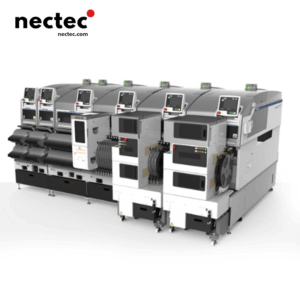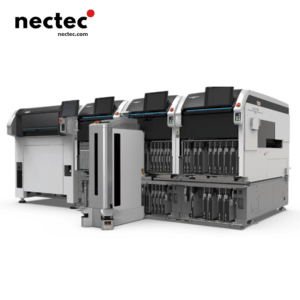The rapid evolution of electronics has changed how manufacturers operate, pushing them to seek enhanced efficiency and accuracy in production processes. At the forefront of this transformation is the pick and place machine—a crucial technology for assembling printed circuit boards (PCBs). In the world of electronics manufacturing, a wholesale pick and place PCB machine stands out as a vital asset for companies looking to up their game.
What is a Pick and Place PCB Machine?
A pick and place PCB machine is an automated equipment used for placing electronic components onto printed circuit boards. It utilizes advanced robotics and vision systems to precisely position components on PCBs, ensuring consistency and high throughput. This technology is integral to modern manufacturing operations, significantly reducing labor costs and human error.
Benefits of Using Wholesale Pick and Place PCB Machines
- Increased Efficiency: With pick and place machines, production lines can achieve faster assembly rates than manual methods. This increased speed translates into higher output and quicker turnaround times.
- Enhanced Accuracy: Precision is key in electronics manufacturing. Automated systems minimize the risk of incorrect placements, allowing for more reliable and accurate production.
- Cost-Effectiveness: While the initial investment might be substantial, the long-term savings from reduced labor costs and waste can significantly improve overall profitability.
- Scalability: These machines can easily be adjusted to handle varying quantities, making them adaptable to different production demands.
- Data Collection: Most modern pick and place machines are equipped with data analytics tools that can monitor production quality and efficiency in real-time. This information is invaluable for improving processes and troubleshooting issues.
Choosing the Right Wholesale Pick and Place PCB Machine
When considering a wholesale pick and place PCB machine, it is essential to assess various factors to ensure the right fit for your goals:
- Production Volume: Determine your average production needs. Different machines cater to varying volumes, and selecting one that matches your demand is critical.
- Component Types: Evaluate the types and sizes of components you will be placing. Ensure the machine can accommodate your specific needs, from small SMDs (Surface Mount Devices) to larger components.
- Budget Constraints: Set a budget that considers not just the machine cost but also maintenance, training, and operational expenses.
- Software Integration: Check for the compatibility of the pick and place machine with your current software systems. Seamless integration can facilitate easier management of production processes.
- Support and Warranty: A reliable support system is essential. Look for manufacturers that offer strong customer service and warranty options to ensure you’re covered in case of any issues.
The Role of Technology in Pick and Place Machines
The incorporation of modern technologies has transformed pick and place machines into sophisticated systems. Here are some advancements impacting their performance:
- AI and Machine Learning: Artificial intelligence can optimize placement strategies and enhance the decision-making process, significantly improving efficiency.
- Vision Systems: Enhanced optical systems allow machines to ‘see’ and identify components accurately, facilitating higher precision placement.
- IoT Connectivity: Internet of Things (IoT) capabilities enable machines to communicate and share data on performance, facilitating smarter manufacturing operations.
Best Practices for Operating a Pick and Place PCB Machine
To maximize the benefits of using a pick and place machine, consider implementing the following best practices:
- Regular Maintenance: Routine check-ups and maintenance can prevent malfunctions and prolong the equipment’s lifespan.
- Staff Training: Ensure that operators are adequately trained to operate the machine efficiently and deal with common issues.
- Optimize Layout: The physical layout of your production line plays a role in efficiency. Organize your workstations to minimize downtime and material movement.
Future Trends in Pick and Place Technology
The future of pick and place machines looks promising, with several trends shaping their evolution:
- Smaller, More Compact Designs: As demand for smaller electronic products grows, the trend towards compact machines capable of placing tiny components is likely to continue.
- Greater Automation: The shift toward full automation in production lines is expected to enhance the efficiency and reliability of PCB assembly processes.
- Sustainability Practices: Manufacturers are increasingly looking at ways to reduce waste and energy consumption in their processes, paving the way for greener technologies.
Investing in Wholesale Pick and Place PCB Machines
Investing in a wholesale pick and place PCB machine can be a game-changer for your business. It’s essential to conduct thorough research and select the right machine that fits your unique production needs. With the ability to streamline operations, increase productivity, and ensure high-quality output, these machines will undoubtedly play a critical role in the future of electronic manufacturing.
The landscape of electronics manufacturing is dynamic, and staying ahead requires embracing innovation and technology. A focus on wholesale pick and place PCB machines can provide the cutting edge necessary to compete in this fast-paced environment, bringing your production processes into the modern era.









